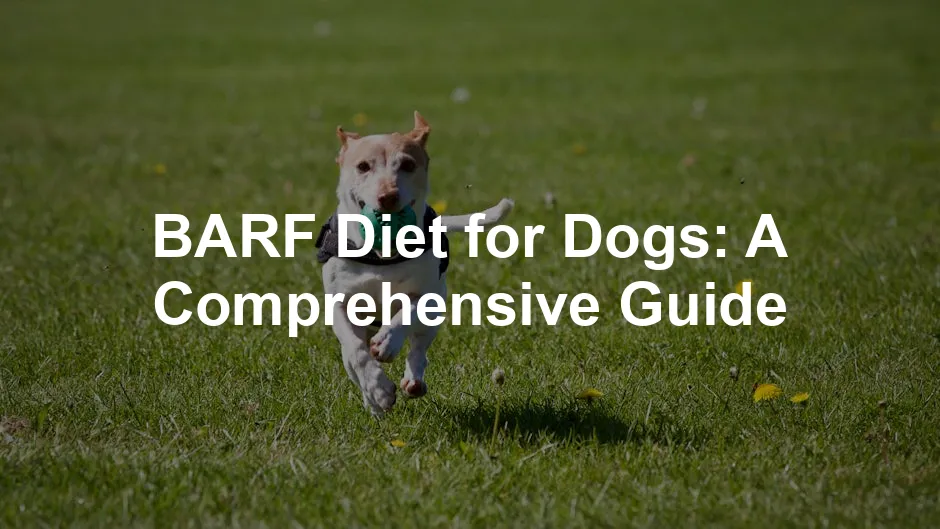Introduction
Are you considering a new diet for your furry friend? The BARF diet, which stands for Biologically Appropriate Raw Food, is gaining traction among dog owners. This dietary approach mimics a dog’s natural eating habits, focusing on raw ingredients. In this article, we’ll guide you through the essentials of the BARF diet, helping you make informed choices for your pet’s nutrition.
Speaking of informed choices, if you want to dive deeper into the BARF philosophy, check out Give Your Dog a Bone by Dr. Ian Billinghurst. This book is a treasure trove of information on how to provide the best nutrition for your dog!
Summary and Overview
The BARF diet, either referred to as “Biologically Appropriate Raw Food” or “Bones and Raw Food,” is all about feeding your dog what they would naturally eat in the wild. The core idea is to replicate a dog’s ancestral diet, which mainly consists of raw meats, bones, fruits, and vegetables.
- Raw muscle meat
- Raw meaty bones
- Fresh fruits
- Vegetables
This diet can offer several potential benefits, like improved digestion and healthier skin. However, it also carries risks, such as bacterial contamination or nutritional imbalances if not properly managed. To help with portioning, consider investing in a Dog Food Scale for Accurate Portioning. This handy tool ensures your pup gets just the right amount of food without any guesswork!
In this article, you’ll learn about the components of the BARF diet, how to transition to it, the benefits and risks, and best practices for ensuring your dog thrives on this feeding method. Whether you’re a seasoned pet parent or new to raw feeding, we’ve got you covered!
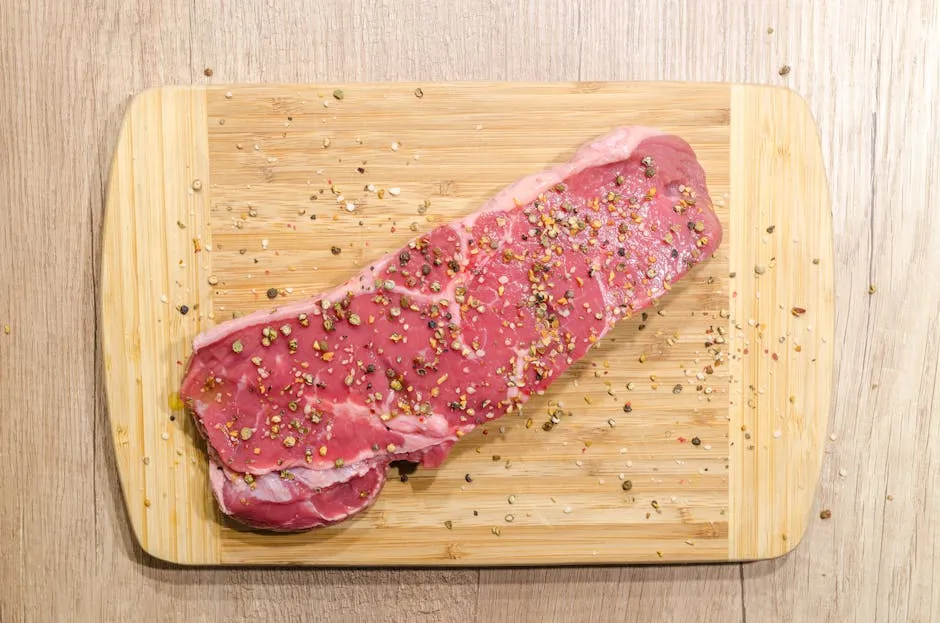
What is the BARF Diet?
The BARF diet stands for “Biologically Appropriate Raw Food” or “Bones and Raw Food.” This approach was popularized by Dr. Ian Billinghurst, an Australian veterinarian, in the early 1990s. His book Give Your Dog a Bone introduced the idea that dogs thrive on a diet resembling that of their wild ancestors, primarily consisting of raw, unprocessed foods.
The philosophy behind raw feeding focuses on mimicking a dog’s natural diet. In the wild, dogs eat what they catch, which includes not just meat but also bones, organs, fruits, and vegetables. The BARF diet aims to replicate this by providing a balanced mixture of animal and plant ingredients.
Typically, a BARF diet comprises about 70% raw muscle meat, 10% raw edible bones, and 20% fruits and vegetables. This composition ensures dogs receive essential nutrients while avoiding fillers commonly found in commercial dog food. Unlike processed kibble, which often contains grains and artificial additives, the BARF diet aligns more closely with a dog’s evolutionary dietary needs.
Statistics show a growing interest in the BARF diet. A survey indicated that around 20% of dog owners have tried raw feeding, highlighting its rising popularity. However, before transitioning your dog to a BARF diet, consider their individual dietary needs. Consulting with a veterinarian can provide valuable insights tailored to your pet’s health and lifestyle.

Different Types of Raw Food Diets
When exploring raw feeding, you’ll find various philosophies, each with unique approaches to nutrition.
- BARF Diet: As discussed, it emphasizes a balanced mix of raw meats, bones, fruits, and vegetables. This type promotes natural nutrition by including both animal and plant-based ingredients.
- Prey Model Diet: This method focuses on mimicking the diet of a wild predator, primarily consisting of whole prey animals. The idea is to provide a natural balance of meat, bones, and organs without additional plant ingredients.
- Raw Meat-Based Diets (RMBDs): These diets mainly consist of raw muscle meat, often supplemented with organ meat and sometimes bones. However, they may lack the vegetable and fruit components found in the BARF diet.
While all these diets aim to provide natural nutrition, their nutritional implications can vary significantly. The BARF diet is more inclusive of plant ingredients, which can offer additional vitamins and fiber. Each feeding method has its pros and cons, so it’s essential to choose one that fits your dog’s specific needs and health conditions.

Benefits of the BARF Diet
The BARF diet offers several potential health benefits for your dog. Many pet owners report noticeable improvements after switching to this raw feeding method. Let’s look at some of the key advantages.
Improved Digestion and Nutrient Absorption
One significant benefit is enhanced digestion. Raw foods maintain their natural enzymes, which help break down nutrients. Dogs often absorb nutrients more effectively from raw meat and vegetables compared to processed kibble. Studies show that dogs on raw diets usually exhibit better gut health, leading to fewer digestive issues. To support this digestive health, consider adding Probiotics for Dogs. They can be a game-changer for your pup’s gut health!

Healthier Skin and Coat
Another benefit is improved skin and coat quality. The omega fatty acids found in raw foods can lead to a shinier, healthier coat. Many owners notice a reduction in skin allergies and irritations after transitioning to a BARF diet. This is often linked to the absence of fillers and artificial ingredients commonly found in commercial dog food. To boost those omega-3s, you might want to try Omega-3 Fish Oil for Dogs. Your pooch will thank you!
Enhanced Energy Levels and Vitality
Dogs on the BARF diet often exhibit increased energy levels. This can be attributed to the high-quality nutrients and proteins that are easily digestible. Owners frequently report that their dogs seem more vibrant and active after making the switch. This boost in vitality can lead to a more playful and engaging pet. Don’t forget to keep those playful moments alive with some Interactive Dog Toys!

Smaller Stools and Reduced Waste
One practical benefit is the reduction in stool size and odor. Raw diets typically lead to smaller, firmer stools. This is because dogs can utilize the nutrients in raw food better, resulting in less waste. Many pet owners appreciate this aspect, as it makes clean-up easier and more pleasant.
Nutrient Retention in Raw Foods
Raw foods retain their nutrients effectively, unlike processed dog food, which often undergoes high-temperature cooking. This process can destroy essential vitamins and minerals. A study published in the Journal of Animal Science highlights that dogs fed raw diets had higher levels of certain nutrients in their systems compared to those on kibble.
Reduction in Food Allergies and Intolerances
Many pet owners find that their dogs experience fewer allergies on a BARF diet. This can be due to the elimination of common allergens found in commercial foods, such as grains and artificial additives. Switching to a raw diet allows for more control over ingredients, making it easier to identify and avoid potential allergens. If you’re looking for some natural dog treats to keep your pup happy, check out Dog Treats Made from Natural Ingredients.
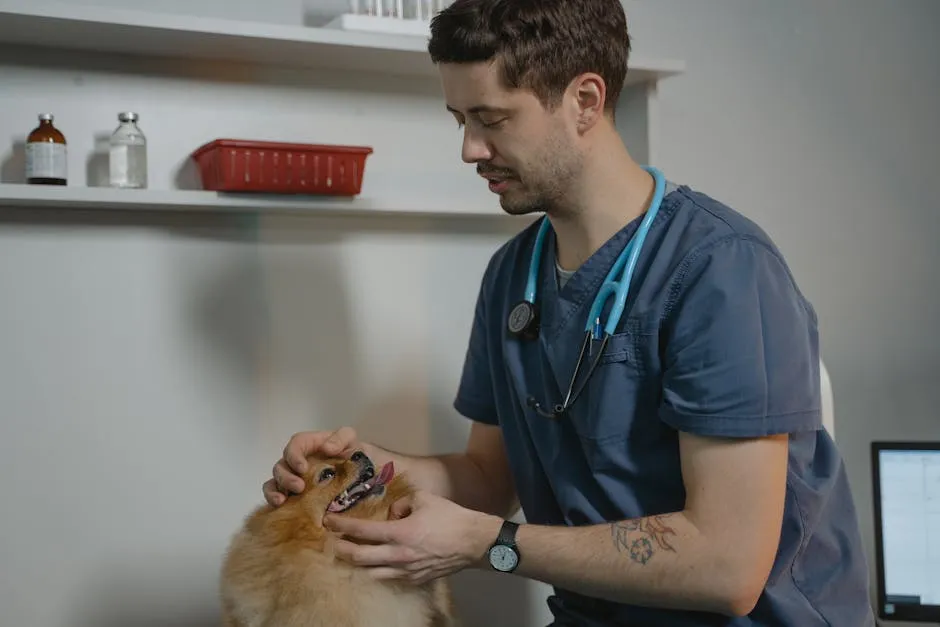
Consult Your Vet
Before making any changes to your dog’s diet, it’s crucial to consult your veterinarian. They can provide personalized advice based on your dog’s health and nutritional needs. If you’re considering the BARF diet, a professional can help ensure a smooth transition and a balanced diet for your furry friend. For more information on food safety, check out our raw food safety for dogs post.
Consulting a veterinarian is essential for ensuring your dog’s health on a BARF diet. Learn more about food safety for dogs.
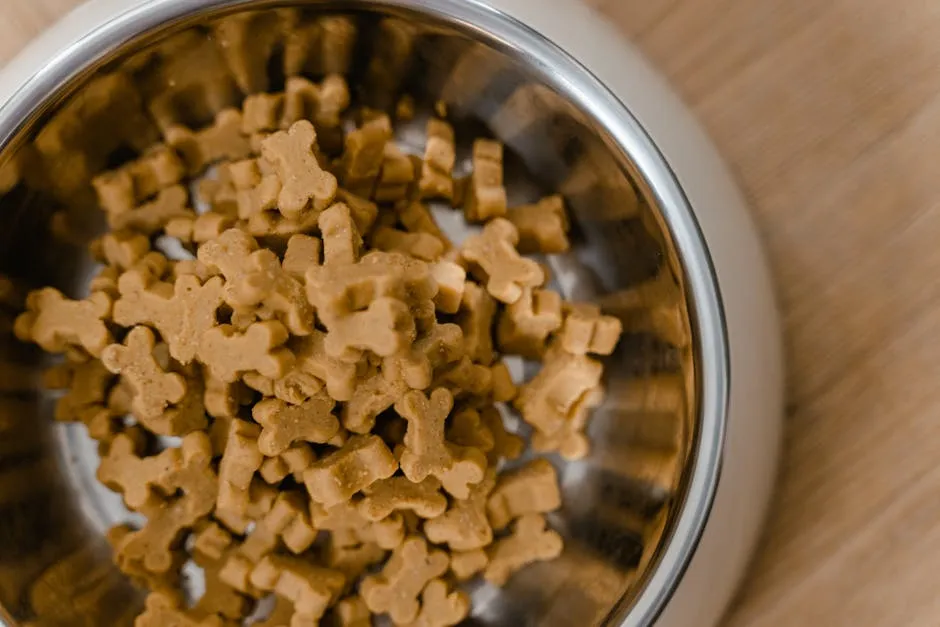
Risks and Considerations
While the BARF diet has many potential benefits, it’s essential to consider the associated risks. Understanding these concerns can help you make an informed decision about your pet’s nutrition.
Bacterial Contamination
One of the primary risks of feeding raw food is bacterial contamination. Raw meats can harbor pathogens such as Salmonella and E. coli, which pose risks to both pets and humans. Proper handling and hygiene practices are crucial when preparing and storing raw food. Always wash your hands and disinfect surfaces after touching raw meat. To keep your home safer, consider investing in an Air Purifier for Homes with Pets. It can help reduce odors and allergens!
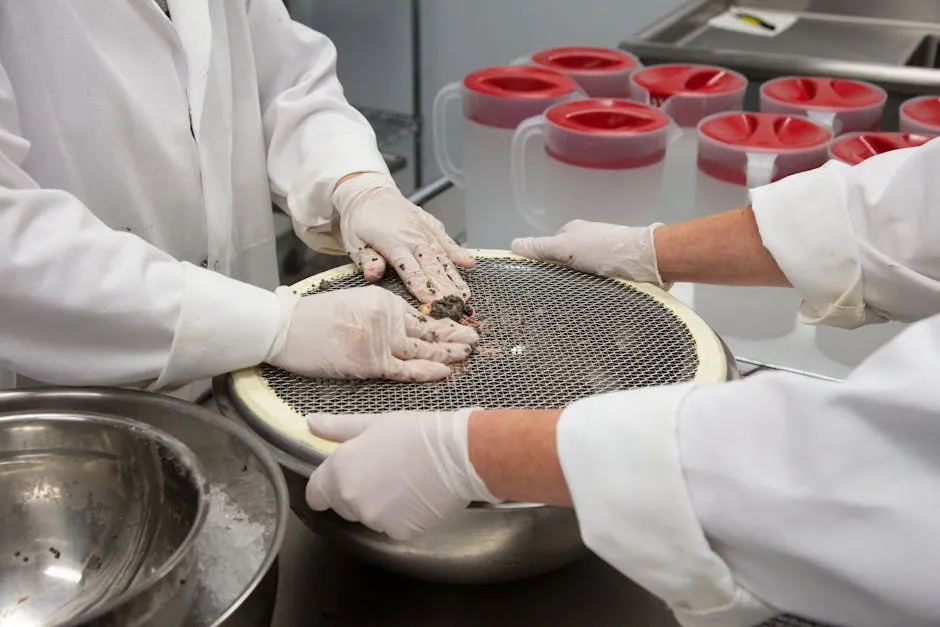
Nutritional Imbalances
If not carefully formulated, a BARF diet can lead to nutritional imbalances. Dogs require a specific balance of nutrients, including protein, fats, vitamins, and minerals. A poorly balanced raw diet can result in deficiencies or excesses, leading to health problems over time. Consulting with a veterinarian or a pet nutritionist can help you create a balanced diet plan.
Choking Hazards from Bones
Feeding bones can present choking hazards, especially if they are not the right size or type. Some bones can splinter, causing serious injuries to your dog’s digestive tract. Always choose raw, soft bones, and supervise your dog while they eat. It’s essential to avoid cooked bones altogether, as they are more likely to splinter.
Importance of Food Safety and Hygiene
Maintaining food safety is paramount. Always store raw meat properly in the freezer and thaw it in the refrigerator to prevent bacterial growth. Use separate utensils and cutting boards for raw food preparation to avoid cross-contamination. Following strict hygiene protocols will help minimize risks associated with raw feeding.
Guidelines for Safe Bone Feeding
When feeding bones, opt for larger, raw bones that are less likely to splinter. Soft and raw bones, like chicken necks or lamb shanks, are safer choices. Avoid hard bones that can break your dog’s teeth. If you notice any signs of choking or distress, remove the bone immediately and seek veterinary advice.

Recommendations for Supplementing Raw Diets
Many raw diets benefit from supplementation to ensure nutritional completeness. Adding omega fatty acids, probiotics, or multivitamins can help fill any gaps. Consulting your vet about suitable supplements for your dog’s specific needs is a good practice. For example, consider adding Kelp Supplements for Dogs for additional nutrients!
Seek Professional Guidance
Transitioning to a BARF diet should not be done without professional guidance. Consult your veterinarian to discuss your dog’s health, dietary needs, and any potential risks. Their insights can help you make informed choices for your pet’s health and well-being.

How to Start Your Dog on a BARF Diet
Thinking about switching your dog to a BARF diet? You’re not alone! Many pet owners are exploring raw feeding to boost their dog’s health. Transitioning to BARF requires careful planning, so let’s break it down into manageable steps.
Gradual Transition Methods
Start by introducing raw foods slowly. Over the course of a week or two, mix small amounts of raw food with your dog’s regular kibble. This gradual approach helps your dog’s digestive system adjust. If your dog experiences loose stools, slow down the transition. It’s all about finding the right pace for your pup.

Recommended Feeding Ratios and Portion Sizes
A typical BARF diet consists of about 70% raw muscle meat, 10% raw edible bones, and 20% fruits and vegetables. Adjust the ratios according to your dog’s needs, weight, and activity level. On average, aim to feed your dog about 2-3% of their body weight daily. For instance, a 20-pound dog would need roughly 0.4 to 0.6 pounds of food each day. To keep those portions accurate, consider using Pet Food Storage Containers.
Importance of Monitoring Health and Adjusting Diets
Keep a close eye on your dog’s health during this transition. Observe their energy levels, coat quality, and overall well-being. Pay attention to their stool consistency. Well-formed stools indicate a good diet, while loose stools might signal a need for adjustment. If you notice persistent issues, consult your veterinarian for personalized advice.

Introduction to Raw Foods
Raw foods can vary greatly, from muscle meats to organ meats and vegetables. Make sure to choose high-quality sources. You can feed your dog chicken, beef, lamb, or even fish. Including a variety of protein sources helps ensure a balanced intake of nutrients. For a great resource on recipes, check out the Raw Dog Food Cookbook: 100 Easy Recipes for Your Dog.
Importance of Observing Stool Consistency
Stool consistency is a key indicator of your dog’s digestive health. As you transition to raw feeding, monitor their stools closely. Well-formed, consistent stools indicate a healthy digestive response. If your dog has diarrhea, it might be time to revert to kibble for a short period. Then, reintroduce raw food more gradually.

Consulting with a Veterinarian for Personalized Advice
Before making any significant dietary changes, it’s essential to consult your veterinarian. They can assess your dog’s health and provide valuable insights tailored to their specific needs. A vet can help you design a balanced BARF diet, ensuring your dog receives all the necessary nutrients.
BARF Diet Grocery List and Meal Planning
Ready to start shopping for your dog’s new diet? Here’s a handy grocery list and some meal planning tips to guide you.
Sample Grocery List for a Balanced BARF Diet
- Proteins:
- Raw chicken, beef, turkey, or lamb
- Organ meats like liver and kidneys
- Raw meaty bones (avoid cooked bones)
- Vegetables:
- Carrots, broccoli, spinach, and pumpkin
- Leafy greens for added nutrients
- Fruits:
- Apples, blueberries, and bananas (in moderation)
- Supplements (if needed):
- Dehydrated Fruits for Dogs for tasty treats!
- Fish oil for omega-3 fatty acids
- Kelp or spirulina for additional nutrients
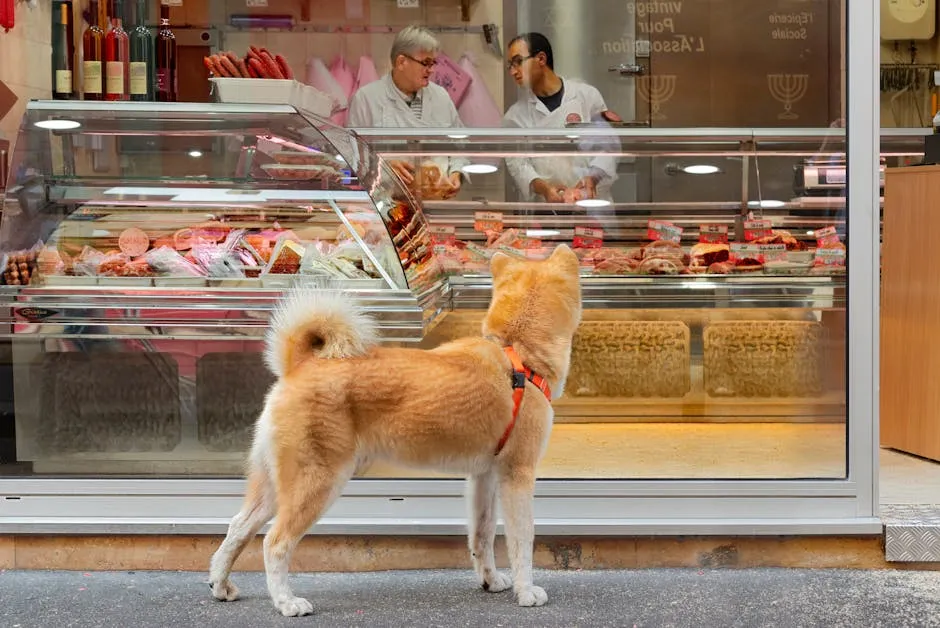
Meal Planning Strategies for Dog Owners
Meal planning is crucial for a successful BARF diet. Aim for variety in your dog’s meals. Each week, rotate different protein sources and include various fruits and vegetables. This not only keeps your dog interested in their food but also ensures a well-rounded nutrient profile.
Recommended Ratios of Ingredients
Stick to the recommended ratios of 70% protein, 10% bones, and 20% vegetables and fruits. Adjust these based on your dog’s individual needs, activity level, and preferences.
Importance of Variety in Diet
Incorporating different foods into your dog’s diet can help prevent boredom and food sensitivities. It also allows you to cover a broader range of nutrients. A diverse diet promotes better overall health and keeps your dog happy at mealtime. To help with this variety, consider using Dog Food Freezer Bags for easy storage!
Plan Your Shopping in Advance
Before heading to the store, plan your shopping list. This way, you won’t forget essential ingredients. Planning in advance can save time and ensure you have everything on hand for your dog’s meals. Happy shopping and happy feeding!
Debunking Myths About the BARF Diet
The BARF diet, or Biologically Appropriate Raw Food diet, often faces skepticism. Let’s tackle some common myths surrounding this feeding method.
First, many believe that dogs can’t digest vegetables. This isn’t true! When properly prepared, dogs can efficiently digest and absorb nutrients from plant ingredients. Techniques like pureeing or lightly steaming vegetables can enhance their digestibility.
Another misconception is that raw diets lead to nutritional deficiencies. In reality, a well-balanced BARF diet can provide all essential nutrients. It’s crucial to include a variety of ingredients, ensuring your dog receives the proper vitamins and minerals.
Some people think all raw diets are unsafe. While food safety is vital, not all raw diets pose the same risks. With proper handling and hygiene practices, feeding raw can be safe and beneficial. Research shows that many dogs thrive on raw diets when prepared correctly.
Plant ingredients play a significant role in a dog’s nutrition. They provide fiber, antioxidants, and essential nutrients that support overall health. So, don’t shy away from including fruits and vegetables in your dog’s meals. If you’re looking for some pet-friendly cleaning solutions, consider Pet-Friendly Cleaning Products to keep your home clean!
By dispelling these myths, we can better understand the BARF diet’s potential benefits. It’s essential to stay informed and consult with a veterinarian for personalized advice about your dog’s dietary needs.
Conclusion
In summary, the BARF diet offers an alternative approach to dog nutrition that mimics natural feeding habits. Understanding the benefits and risks associated with this diet is key to making informed decisions. Always consult with a veterinarian before making significant changes to your dog’s diet. Research thoroughly and consider your dog’s unique needs to ensure they receive the best nutrition possible.
FAQs
- What does BARF stand for? BARF stands for “Biologically Appropriate Raw Food” or “Bones and Raw Food.” It emphasizes feeding dogs a diet similar to what they would eat in the wild, focusing on raw ingredients.
- Is the BARF diet safe for dogs? Yes, the BARF diet can be safe for dogs when proper food safety practices are followed. This includes ensuring the meat is fresh, handling it hygienically, and following guidelines for balanced nutrition.
- How do I transition my dog to a BARF diet? Start by gradually introducing raw foods over 7-10 days. Mix small amounts of raw food with your dog’s current diet to help their digestive system adjust. Monitor their health closely during the transition.
- What are the risks of feeding my dog a BARF diet? Potential risks include nutritional imbalances if the diet is not well-planned, bacterial contamination, and choking hazards from bones. Consulting a veterinarian can help mitigate these risks.
- Can I mix raw and commercial dog food? It’s generally not recommended to mix raw and commercial foods in the same meal. However, you can transition gradually or alternate between the two, ensuring your dog gets balanced nutrition.
- What should I include in my dog’s BARF diet? A balanced BARF diet typically includes raw muscle meat, raw meaty bones, fruits, and vegetables. Aim for a mix of 70% meat, 10% bones, and 20% plant-based ingredients for optimal nutrition.
Feel free to share your thoughts or ask more questions about the BARF diet in the comments! Your experiences can help others on this journey.
Please let us know what you think about our content by leaving a comment down below!
Thank you for reading till here 🙂
All images from Pexels

